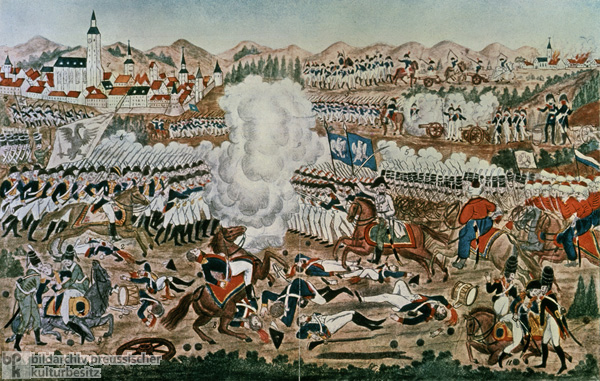













INTRODUCTION | DOCUMENTS | IMAGES | MAPS | EDITOR
|
After the Peace of Basel (1795), Prussia’s Frederick William II (r. 1786-97) maintained a policy of neutrality. But in 1806, his son and successor, Frederick William III (r. 1797-1840) strayed from this policy by declaring war on France. In making the decision, he was encouraged by Russia and motivated by his own territorial ambitions within Germany. This image shows the battle of Jena (then part of the Duchy of Saxe-Weimar) which, together with the battle of Auerstedt, ended in a crushing defeat for Prussian forces (see the flag on the left, which features the black Prussian eagle on a white background). Napoleon, who commanded French troops at Jena (on the right), led a victory parade into Berlin later that month and forced the Prussians to sign the Peace of Tilsit (1807), which reduced Prussian territory by nearly half. The demise of the army that had been built by Frederick II came as a painful shock and impelled Prussia to undertake fundamental internal reforms before confronting Napoleonic France again in 1812-13. Painting by an unknown artist, contemporary.
© Bildarchiv Preußischer Kulturbesitz |
 print version
print version return to image list
return to image list previous image
previous image
